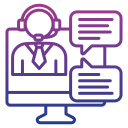Leveraging Technology for Competitive Advantage
Welcome to our deep dive into how smart, focused technology choices create durable market edges. In this edition, we explore the chosen theme—Leveraging Technology for Competitive Advantage—through stories, frameworks, and prompts you can act on today.
Define the Value Hypothesis
Before buying tools, articulate how the technology will change customer behavior, cost curves, or speed. A clear value hypothesis prevents scattered experiments and helps your team say no to shiny distractions.
Choose Differentiating Capabilities
Identify two or three capabilities where you must lead the market—personalization, fulfillment speed, or reliability—and invest disproportionately there. Advantage compounds when tech deepens what already makes your business uniquely valuable.
Engage Your People in the Strategy
Share the why, not just the what. One product team we met drew a customer journey map on the wall and tagged each pain point with a tech bet, inviting feedback. Try it, and subscribe for more field-tested exercises.

Data as a Moat, Not a Silo
Consolidate critical entities—customers, products, orders—into a consistent, well-documented model. A unified layer reduces reconciliation time and lets teams prototype faster. Comment with your toughest integration challenge, and we will feature practical approaches.
Data as a Moat, Not a Silo
Insights matter when they change behavior. Push models and rules into frontline tools so agents, apps, and machines act immediately. A regional grocer used store-level recommendations to reduce waste and spark local experimentation.
Automation and AI That Compete on Time
Map the end-to-end path from customer request to fulfillment. Where are handoffs, rework, or approvals slowing outcomes? Target those delays with automation, then measure cycle time relentlessly to prove the edge.
Automation and AI That Compete on Time
AI should augment, not replace, expertise. Create workflows where models propose, humans decide, and systems learn from decisions. This pattern increases trust while improving model performance every week.


Platforms, Ecosystems, and APIs
Think in Platforms, Not Projects
Design reusable capabilities—identity, payments, catalog—that any team can consume. When new ideas reuse proven building blocks, time-to-market shrinks and quality rises. Ask for our platform capability checklist in the comments.
Win in the API Economy
Expose high-value services with clear contracts, versioning, and usage analytics. Partners who integrate once are likely to expand, deepening stickiness. Share which API would unlock the most growth for your business right now.
Ecosystem Story: The Unexpected Partner
A midsize manufacturer exposed inventory status via APIs and discovered resellers building smarter ordering tools. The manufacturer gained demand visibility while resellers improved margins—a simple integration created mutual advantage.


Security as a Strategic Advantage
Shift left with threat modeling, code scanning, and automated dependency checks in the pipeline. Secure defaults reduce incidents and recovery costs, freeing energy to innovate. Comment if you want a lightweight threat model template.
Security as a Strategic Advantage
Adopt least privilege, continuous verification, and micro-segmentation. Customers notice uptime and responsiveness during incidents. Zero Trust improves both, turning security posture into operational resilience your competitors struggle to match.
Culture, Talent, and Change Velocity

Adopt a Product Mindset
Organize around customer outcomes, not projects. Product teams own problems end-to-end and iterate continuously. This mindset aligns incentives with value and turns technology into a constant engine of differentiation.

Upskill at the Speed of Need
Create learning sprints tied to active initiatives: cloud costs this week, prompt engineering next week, security hardening the following. Short, focused practice beats long, generic courses. Tell us what skills your team needs now.

Psychological Safety Drives Experimentation
Teams take smart risks when it is safe to surface doubts and failures. Celebrate learnings, not just launches. An engineer’s brave demo of a flawed prototype saved months and redirected investment toward a better idea.
Measurement and Proof of Advantage
Define North Star Metrics
Choose metrics customers feel—time to value, reliability, personalization lift—then cascade supporting metrics across teams. When everyone sees cause and effect, momentum spreads. Share your North Star and we will suggest complements.
Attribute Tech to Outcomes
Use experiment design, holdouts, and cohort analysis to link features to results. Tie platform reuse to time saved, and automation to cycle time. Transparent attribution builds confidence for the next bold bet.
Close the Loop with Feedback
Publish lightweight roadmaps, invite comments, and run regular show-and-tells with customers. Feedback turns into prioritization fuel, ensuring your technology continues pulling you ahead. Subscribe for monthly templates and facilitation guides.
